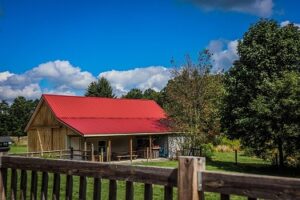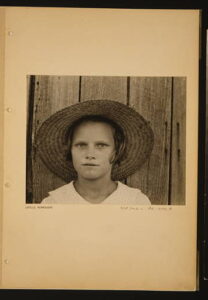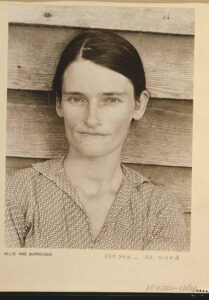
As you know if you’ve read many of the posts on this site, I love tracking down the origins of creative works. So “The Promise of Living” from Aaron Copland’s opera The Tender Land has provided me with a number of rabbit trails to pursue in this regard. My choir sang it several years ago as the finale to a concert, and while I didn’t manage to squeeze in a post about it then it’s been on my list of Intriguing Pieces To Discuss.
On the surface the words would imply that this is a harvest/Thanksgiving piece, and indeed some program notes or even sheet music characterize it as such. Here’s how it starts:
The promise of living with hope and thanksgiving
is born of our loving our friends and our labor.
So far so good, right? Wouldn’t you picture a big table full of food, with everyone singing around it? As the harvest moon shines in the sky? That’s what I assumed to be the case, but I was very wrong. Instead, the original ensemble piece, sung as the finale of Act I, involves only five voices and takes place in the spring. The people singing are: Grandpa Moses, Ma Moses, Laurie, and the two hobos, Martin and Top, who have just shown up at the Moses midwestern farm, looking for work. The hobos have arrived right before a big party to celebrate Laurie’s upcoming graduation from high school. Grandpa has shown them where they can sleep, saying that it’s a “fine night,” and Martin, the younger of the two, stays behind to look at the sky/moon/sunset and starts out with the above two lines. As the song progresses the other main characters come onstage and join in with their parts. If you follow the words closely you’ll see that they’re singing about the harvest that’s going to take place after they’ve done the initial work:
We plant each row with seeds of grain, and Providence sends us the sun and the rain.
So, no, the two itinerants aren’t working the harvest, not even the “spring harvest,” as some commentary says. (Whatever you’d be harvesting during the spring in the Midwest anyway.)
The next act includes the actual party, at which Laurie and Martin fall in love, exchange a kiss, and make plans to elope. In the end, though, Martin is talked out of the idea by Top, who sees life a little more clearly than his friend and doesn’t think this elopement is a good idea at all. When Laurie comes out of the farmhouse with her satchel all packed, ready for this new adventure, the two men are gone. She’s distraught but decides to leave home anyway, off on a big adventure of her own.
When Copland wrote the original version of his opera starting in 1952 (at which time it had only two acts, later expanded to three), he was doing so in response to a commission from NBC’s Television Opera Workshop. (Can you imagine any major TV network doing such a thing today? Truly mind boggling. NBC had broadcast Gian Carol Menotti’s Amahl and the Night Visitors the year before as their premier commission, the first opera ever composed for television.) The finished work, however, was rejected when it was presented to the network in 1954, apparently without there being any definite reason given publicly. However, just from my poking around a bit online, I’d say that the reason seems abundantly clear: Copland had been hauled in front of the House Un-American Activities Committee led by Senator Joseph McCarthy in 1953 and questioned about his Communist sympathies and any official ties to the party. But . . .
Copland was more than equal to the challenge of the hearings, and he held his own with McCarthy in an often masterly piece of prevarication. “I spend my days writing symphonies, concertos, ballads and I am not a political thinker,” he told the committee. (“An American Life”)
Doesn’t it seem more than likely that someone at NBC said, “Are you kidding? That guy’s a Commie, and a slippery one, too”? I’ve also seen some speculation that Copland’s homosexuality played a part in the rejection; to add to that scandal his longtime partner, Erik Johns, wrote the libretto, although he used the pseudonym “Horace Everett.” It seems easy to connect the dots on both counts.
Well, Copland persevered with a theater performance of the work at the New York City Opera, but it was, as they say, “poorly received.” One explanation given for the failure was that the opera had been written for the intimate form of TV, with the ability to do closeups and crops, and that it simply didn’t work on a big stage. Copland and Johns did some expansions of Act II and ended up making the opera into three acts, but it never did well. You can find a few recordings on YouTube; the latest full performance I’ve found is from 2017. Seems kind of a shame. “The Promise of Living,” though, is now a staple of choral performances, “Laurie’s Song” is popular in vocal recitals, and I’ve even found one choral version of “Stomp Your Foot,” which takes place at the party scene. I include performance videos of all three below. (The “Laurie” song is not in a typical recital setting, for sure. Be sure to watch it!)
But where did Copland get the idea for the opera’s story in the first place? Ah, that’s also a fascinating story, one that has led me far afield. I actually found an essay written by Erik Johns himself about Copland’s path to the opera. See the bottom of this post for information about how you can access the entire work. It is well worth reading.
Anyway, Johns says, Copland had always been a little leery about trying to write an opera: “’All those notes,’* he would say, ‘and that awful bugaboo, dialogue.’” The two men had discussed the possibility of Johns doing the libretto should Copland ever go ahead with the music, but there the idea had rested. I’m assuming that these discussions were taking place in the context of the NBC commission (Copland had at first turned it down), although Johns maintains a discreet silence on that issue. One day, though, Copland brought Johns a copy of the book Let Us Now Praise Famous Men with photographs by Walker Evans and text by James Agee, and he played some musical “sketches” that he had written in connection with the book. Johns took this material as a signpost for the direction Copland wanted him to take. “I did not read the book,” Johns says, “but I carefully examined the photographs. What struck me most was the sharp difference between the faces of the young daughter and her mother, the one not yet hardened by the grim life, the other passive, stony, yet very much a mother despite her private bitterness. What would the effect of two strangers entering these lives be? It was the answer to this question which came to be my plot.” (See below for the two photographs. I am nothing if not thorough. Both images were accessed via the Library of Congress website.)


So I guess we’d better take a look at this book which proved to be such an inspiration to Copland and Johns, which was first published in 1941 and gets its title from an obscure book in the Jewish Apocrypha, the Wisdom of Sirach: “Let us now praise famous men, and our fathers that begat us.” Since the book concerns the lives of poverty-stricken sharecropping families in the American South during the Great Depression, I think we can safely assume that the title is meant to be ironic: the men and women in the book are anything but famous. Evans’ photographs have become classics, but it was the commentary by James Agee that vaulted the book to fame. He becomes a character in the book instead of maintaining any kind of journalistic objectivity. But, as noted above, Johns didn’t read Agee’s material. Instead, as he looked at the people in the photographs, he considered how their totally isolated and poverty-stricken lives would have been affected by the intrusion of the two strangers from the outside world. In the end he decided to move the story from the South to the Midwest and to make the two strangers a couple of drifters looking for work. The coming of age of Laurie, the daughter, forms the spine of the story.
Below is a plethora of performances. First, one by the Concordia Choir led by the great René Clausen:
Then the unconventional-but-great performance of “Laurie’s Song”:
And the performance of “Stomp Your Foot”–the video quality isn’t great, which may explain why it hasn’t had many downloads–but the voices and orchestra are GREAT:
And, just because I think you should see the song in its original setting:
And here’s how you can access the article written by Erick Johns: I didn’t want to interrupt the text too much to explain above how you can get it. The article is available on a site called JStor, which is a database of scholarly material and usually requires either a subscription or membership in an institution. However, you can open a free account and get 100 articles for free–not with the ability to download, but you can read it online.
“The Tender Land: An Opera in Two Acts”
*Did Copland’s comment remind you of the movie Amadeus?

